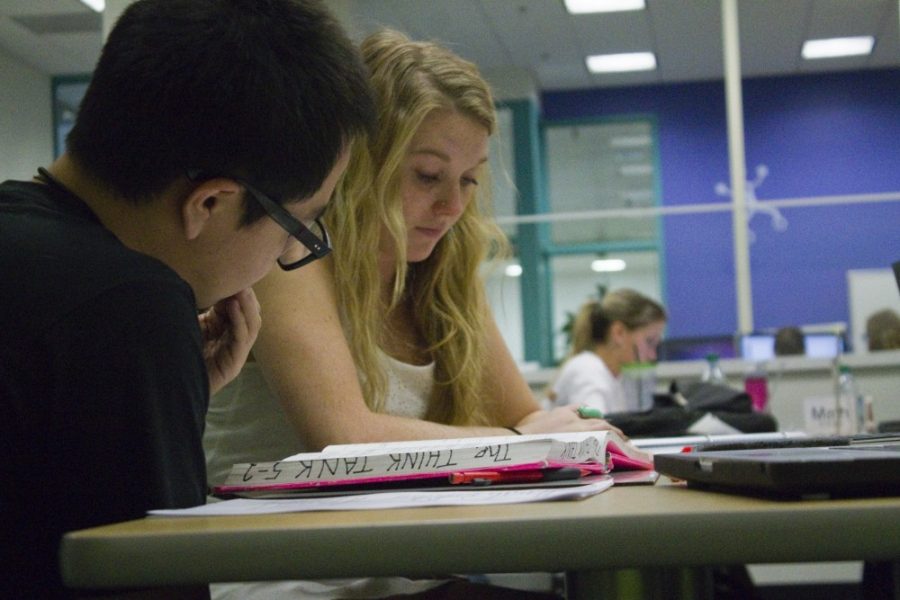Despite a lagging economy and rising tuition, the UA is experiencing a personal best in four-year graduation rates.
Of the 6,709 students who enrolled at the UA in fall 2008, a record 39.9 percent graduated within four years, compared to the 36.3 percent of students who enrolled in fall 2006. Nationally, for the first time ever, one-third of 25 to 29-year-olds have achieved at least a bachelor’s degree, according to a study by the Pew Research Center.
“One of the fastest ways to save on college is to move through it as quickly as possible,” said Melissa Vito, vice president of Student Affairs, speaking on students’ possible motives for wanting to graduate on time.
Vito said a “constellation of a lot of efforts” outside the classroom help make this increased student success rate within it possible.
Jeff Orgera, assistant vice president of student affairs, oversees student resources such as the Think Tank and the SALT Center, and said he believes retaining students after their first year is an obvious factor in ensuring graduation.
“Well it’s a pretty big context,” he said. “I mean, when you think about graduation and you think about retention, they work hand-in-hand.”
Due to the economy, students are entering the university more focused on their goalsthan ever, Ortega said, and many enroll with a specific future job already in mind. Bringing these plans to fruition requires effort even before freshmen orientation.
“Enrollment management — not just bringing in a good freshman class, but if you bring that right class, then it’s hopefully going to bring up retention, which has gone up this year,” said Rafael Meza, director of undergraduate recruitment. “And then hopefully translate to what you’ve seen with that growing graduation rate as well.”
Meza described the graduation process as a funnel, with him stationed near the beginning of the pipeline endorsing and contacting prospective students. While White, Hispanic, Black, Asian-American and Native American students are enjoying increased four-year graduation rates, certain groups have historically faced more complex difficulties navigating this pipeline.
Historically, Native Americans’ four-year graduation rates have lagged behind other ethnicities’, but within the last 17 years the group’s four-year graduation rate has seen an increase of 20 percentage points, according to the UA office of Institutional and Research Support.
“I think that American Indians in general are disproportionally disenfranchised, for lack of a better word,” said Kyle Ethelbah, program director for Native American Student Affairs. “There’s a number of things that still play into the social structures of a lot of American Indian communities. There’s still higher-than-average rates of substance abuse, the health conditions aren’t that well, as well as the socioeconomic conditions.”
Ethelbah, who now oversees the program he once participated in as a UA student, said it’s key to connect Native Americanss with the larger picture.
“We don’t want to move them into their own silos, we actually want to help them get in the main stream of the campus environment,” Ethelbah said. “And by increasing that, they’ll increase graduation rates.”
Ethelbah added that lowered economic resources have led Native American Student Affairs to look outside of traditional means to help raise graduation rates and increase academic achievement.
Students who use these campus resources said beyond the services they offer, teachers’ attitudes also play a major role in students’ success.
“The structures of the classes and what they provide for you to do well, and if they are, then you care,” said Racquel Moore, a public health junior. “But if they don’t, then you just brush it off.”
Moore, who has benefitted from the Think Tank in the past, said these campus assets are provided for a reason.
“Make this campus the student’s campus,” Ethelbah said, “because when they’re disengaged, they’re not going to feel like they have any investment into the campus.”









